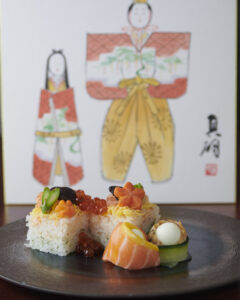Sake is a topic that inspires and fascinates us.
To properly fathom the diversity of Japanese sake is often difficult for people in the West, as it is a complex and typically Japanese artisan product with great depth.
And because of its gustatory sophistication and hundreds of flavors, the many different sake varieties and sake makers offer a life-filling field of discovery.
But how many types of sake are there actually?
How many sake breweries are there?
We will try to give you a rough overview and also introduce you to some interesting sake breweries and sake varieties here. Without any claim to completeness, but with the certainty that you will find with us in the Restaurant sansaro can discover some exciting varieties and different directions of sake.
How many types of sake and sake breweries are there?
For definition: as Sake variety we denote here the single product - just as there are, for example, different types of beer from a beer brewery (for example, Steiner Hell, Steiner Export or Steiner Märzen).
At the same time one brewery several brands just as there is the conventional beer brand "Steiner" from the Stein Castle Brewery and at the same time the organic beer series "Heinz vom Stein".
How many sake breweries are there?
According to the Data published by the national tax authority there were in 2017 1,371 sake breweries in Japan.
Of these, 6 are large companies with capital of more than 300 million yen and more than 300 employees, 1,300 are small and medium-sized enterprises, and 65 are sole proprietors with fewer than 300 employees.
How many brands of sake are there?
On the Japanese Wikipedia page there is a Post titled List of sake brands.
Accordingly there are 1981 different sake brands. However, a brand here includes different varieties of products. For example, Katsuyama is a brand that includes "Lei" and "Den'.
How many types of sake are there?
In addition, there is a book entitled "Sake Data Book", which was published in 2007. The exact content of the book is not known to us, but the title says that it is 15,706 Sake varieties exists. Currently, we have not found any information that was created after 2007.
How is the number of sake breweries developing?
The number of sake breweries in Japan continues to decline:
In 1970, there were 3,533 breweries; in 2017, there were only 1,594. These figures refer to breweries with a brewery license; the number of actually operating breweries is less than 1,400 (see above).
Most of these businesses are small, medium and micro enterprises, and the number continues to decline as breweries close each year.
For example, Asahi Shuzo, which produces sake under the Dassai name, is a small- and medium-sized company with 214 employees (91 of whom are part-time). Other breweries are certainly smaller than Asahi Shuzo. So most of the sake we feature are really small, specialized sake breweries.
Many reasons for breweries closing are the lack of successors and artisans, but there are also cases where companies give up due to financial difficulties resulting from declining consumption.
(Source: https://www.nta.go.jp/taxes/sake/shiori-gaikyo/seishu/2018/index.htm)
How has sake consumption evolved over the past few decades?
Domestic shipments of sake in Japan peaked at over 1.7 million kiloliters (17 million hectoliters) in 1973, but have been declining due to competition from other alcoholic beverages. In 2020, it will fall to around 420,000 kℓ (4.2 million hectoliters).
The share of Tokutei-Meishōshu (sake with special appellations) in domestic sake shipments increased steadily from 26 % in 1998 to 34 % in 2017. Among them, the share of Ginjōshu is increasing, and the growth of sake positioned in the so-called high-end category is increasing.
While the volume of domestic sake shipments is declining, export volumes are on an upward trend. In 2020, the total value of sake exports exceeded about 24.1 billion yen (103.1 % of the previous year's value), reaching a record level for the eleventh consecutive year. Compared to 10 years ago, the volume of sake exports has doubled and the value of exports has tripled.Sixty-one countries are export destinations, of which five-the U.S., China, Hong Kong, Taiwan, and South Korea-account for about 80 % of the volume and value. (Source: https://www.nta.go.jp/information/release/kokuzeicho/2020/sake_yushutsu/0021001-122.pdf)
What are the regional differences in sake?
While there are not as many sake breweries as there used to be, there are still sake breweries all over Japan that make sake with local specialties.
Japan is an elongated landmass, and between Hokkaidō in the north and Kyūshū-Okinawa in the south, there are significant differences in climatic conditions, the nature of the water, the surrounding nature, and the preferred local foods. Regional differences in food & beverages, especially also on raw materials used or their preparation or composition, are a typical part of Washoku, the world heritage of Japanese cuisine. Such diversity is also found in Japanese sake.
There is a tendency to produce lighter, drier sake in the colder regions and stronger, full-bodied sake in the warmer regions. And if you take a closer look at the regional characteristics, you will discover yet another whole new world of sake.
In addition, the sake selection becomes even more interesting when you become aware of the uniqueness of each brewery and the traditions and stories behind it.
For more on regional differences, see our article on Sake origin by region.





